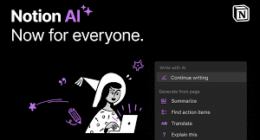A Guide to Understanding AI’s Benefits and Drawbacks
Artificial Intelligence (AI) is transforming the way we live, work, and study. From smart assistants to autonomous vehicles, AI offers significant advantages but also presents notable challenges. Understanding both the benefits and drawbacks of AI is crucial for students, professionals, and technology enthusiasts looking to navigate the modern digital landscape.
Benefits of AI
Increased Efficiency and Productivity
AI can automate repetitive tasks, allowing humans to focus on more strategic or creative work. For example, AI-powered software can handle data entry, scheduling, or even content creation, increasing overall productivity.
Enhanced Decision-Making
By analyzing large datasets quickly, AI helps make more informed decisions. In sectors like healthcare, finance, and education, AI algorithms identify patterns and trends that humans may overlook, improving accuracy and outcomes.
Personalization and User Experience
AI enhances personalization in apps, websites, and services. Streaming platforms, e-commerce sites, and educational tools use AI to recommend content or products tailored to individual preferences, improving engagement and satisfaction.
Advancements in Healthcare
AI assists doctors in diagnosing diseases, predicting outbreaks, and recommending treatments. Robotics, AI imaging, and predictive analytics improve patient care and streamline hospital workflows.
Drawbacks of AI
Job Displacement
One of the most cited concerns is AI’s potential to replace human jobs. Automation in manufacturing, customer service, and even professional roles can lead to workforce disruptions if not managed carefully.
Privacy and Security Issues
AI systems often rely on large amounts of personal data. Without proper safeguards, this can lead to data breaches, misuse, or unethical profiling of individuals.
Bias and Ethical Concerns
AI algorithms are only as unbiased as the data they are trained on. Flawed or biased data can lead to unfair outcomes in areas like hiring, law enforcement, and lending, raising serious ethical questions.
High Implementation Costs
Advanced AI systems often require substantial investment in hardware, software, and training. Smaller organizations or educational institutions may struggle to afford these resources, limiting accessibility.
Balancing AI Use
Responsible AI Deployment
To maximize benefits while minimizing drawbacks, organizations must implement AI responsibly. This includes monitoring performance, auditing algorithms for bias, and maintaining transparency in how AI decisions are made.
Human Oversight
AI should augment human work rather than replace it entirely. Maintaining human oversight ensures ethical decision-making and preserves jobs that require creativity, empathy, and critical thinking.
Education and Skill Development
For students and professionals, learning AI skills is essential. Understanding AI’s capabilities and limitations allows individuals to adapt to new technologies while taking advantage of AI-enhanced tools.
Conclusion
AI offers immense benefits, including efficiency, personalization, and innovation, but it also presents challenges like job displacement, privacy concerns, and ethical issues. By using AI responsibly and maintaining human oversight, we can harness its potential while mitigating risks. For college students and tech enthusiasts, understanding these dynamics is essential to thrive in a world increasingly shaped by artificial intelligence.









